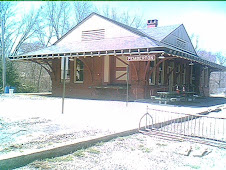This may be of interest to those following the mission of Pemberton First since it entails a portion of the North Pemberton Road area and the Draft Master Plan's proposed zoning changes along 206.
At the Joint Land Use Study meeting, an official suggested that interested parties should inquire and read up on the studies listed on the Burlington County website. To do so, click here!Draft plan approved for Route 206
By CAROL COMEGNO • Courier-Post Staff • January 8, 2009
MOUNT HOLLY — Burlington County's freeholders on Wednesday tentatively approved a draft plan to help towns along the rural Route 206 corridor balance land preservation and development.
Now the plan goes to a steering committee of representatives from 13 municipalities in the corridor for review and subsequent public hearings.
The vision statement for the Northern Burlington County Growth and Preservation Plan calls for a "balance of town and country" that will enable the communities to remain the county's last major farm belt.
It provides a framework for municipalities to address land use, housing, economic development, transportation, agriculture and other issues in a region making up nearly 150,000 acres near the Pinelands and two military bases.
"There is a dual, long-term goal here," said Freeholder-Director Joseph Donnelly. He said the plan should guide towns in their own land preservation and development efforts, while also helping them avoid land-use conflicts with neighboring municipalities.
"We can't dictate but we can work with the towns toward their individual goals," said Freeholder William Haines, who noted community goals can differ.
For example, he said, Springfield has 10-acre zoning for homes in order to avoid development but other towns would like to see some growth within their borders.
The plan was four years in the making, and reflects input from residents and officials in the affected area.
The plan calls for concentrating development into existing or new villages, said Mark Remsa, the county director of economic development and regional planning. That approach will avoid sprawl and preserve farmland and open space, he said.
He said that goal can be reached through a planning and zoning tool known as Transfer of Development Rights -- a tactic already adopted by the townships of Chesterfield, Mansfield and North Hanover.
County officials, who have focused on farmland preservation in this corridor, will continue to target an additional 10,000 acres. Of the 28,000 acres the county has preserved over the past 20 years, 21,000 are in this region.
The area also has strong potential for housing and commercial growth, according to the report. Under current zoning rules, the number of housing units could reach 39,363 units by 2035, an increase of 19 percent from the present.
"The question is not whether that is good or bad but how you plan for it if it happens," Remsa said.
If the corridor plan eventually is approved by the state, municipalities will be eligible for state planning grants to help reach goals.
Reach Carol Comegno at (609) 267-9486 or ccomegno@courierpostonline.com




